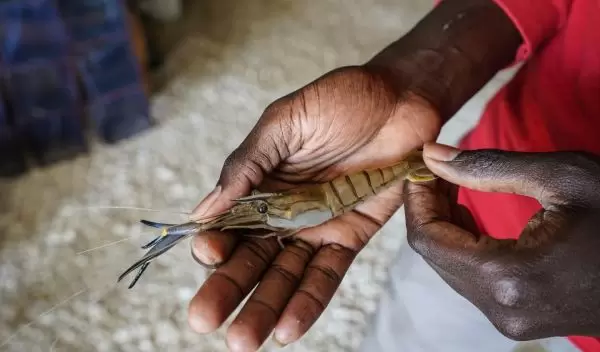
How fat prawns can save lives
Before crustaceans like crayfish, shrimp and prawns land on dinner plates, they fatten up — and relish eating freshwater snails that transmit the parasite that causes schistosomiasis, the second most devastating parasitic disease worldwide, after malaria.
New research led by University of California, Berkeley scientists provides a roadmap for how entrepreneurs can harness freshwater prawns' appetite for snails to reduce disease transmission, while making a profit selling the tasty animals as food.
The study results, published in the journal Nature Sustainability, show how small-scale farming of freshwater prawns could be a win-win in emerging, developing economies where schistosomiasis is common.
"River prawns are common aquaculture products in settings around the world, and we know these organisms are voracious predators of the snails that transmit schistosomiasis," said UC Berkeley's Christopher Hoover, who led the study. "What has not been clear is if we could marry the economic benefits of prawn aquaculture with the disease-control activity of the prawns."
Freshwater prawns are already being produced around the world, from Louisiana to Thailand to Senegal and beyond.
Juvenile prawns are raised in hatcheries, then stocked in waterways where schistosomiasis is transmitted, and finally harvested once they reach a marketable size. As the prawns grow, they feed on the snails that carry the schistosome parasite, says Justin Remais of UC-Berkeley, senior author on the study.
The parasite is not able to infect the prawns themselves, and schistosomiasis is not transmitted by ingestion, so raising, harvesting and consuming prawns cannot pass along the disease.
"The interconnectedness and complexity of the food, water, energy and health nexus are apparent in this research," says Tom Torgersen, a program director in NSF's Division of Earth Sciences, which funded the research. "This study points the way to other similar approaches."
